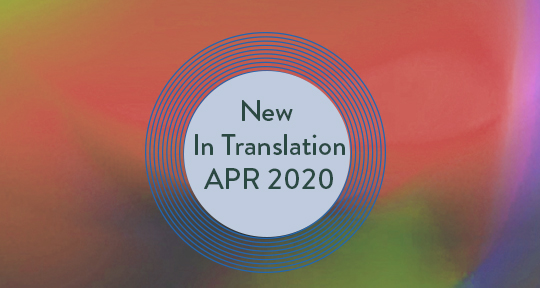In the newly ruptured world, the questions that arise all seem perplexingly novel. It is somewhat of a tonic, then, that one turns to literature to find that the queries that confound us now are more specific reiterations of questions that have plagued humanity for a long, long time. What is freedom? How do we persist through the turmoil of our nations? What does the past mean for the present? And, perhaps most pertinently, what survives? In this month’s selections in translated literature, four astounding works from around the world encounter and contend with these problems in their singular styles. Below, discover a passionate novel about a real-life Algerian bookseller, a Guadeloupe-set fiction that intermingles personal and national revolution, the latest English-language volume in Roberto Calasso’s grand series on human civilization, and a Japanese literary sensation which contends with feminine pain and perseverance.
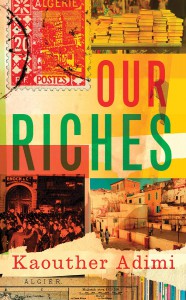
Our Riches by Kaouther Adimi, translated from the French by Chris Andrews, New Directions, 2020
Review by Clémence Lucchini, Educational Arm Assistant
Though one cannot truly stress all the qualities of Our Riches, Kaouther Adimi’s first translated novel into English by Chris Andrews, within the limits of a book review, Adimi has certainly proved that she is able to convey Edmond Charlot’s life long passion for books in less than two hundred pages. In this historical fiction, recognized with two French literary awards, Adimi finds a new way to portray her native Algeria: through Edmond Charlot’s many literary endeavors.
For those who do not know Edmond Charlot (I was among that group before reading this book), he left a great gift to the publishing world by being Camus’ first publisher, by publishing under-represented authors, and last but not least, by pioneering the design of book covers as we know it today in Western Europe, referred to as “the talk of the publishing world” in Adimi’s work.
Our Riches consists of two vibrant and closely knit stories across tempestuous generations, and Adimi’s writing creates an agile prose which, in translation, provides a faithful voice to characters who are losing their bearings in uncertain times. The first tale is the one of “Charlot’s Band”—a title that encapsulates Charlot’s desires of “Mediterranean literature and friendship.” Narrated via Charlot’s journal entries, the text starts in the 1930s and spans just a little over three decades; albeit fictional, they are cleverly concise and create a sort of fruitful frustration that urges the reader to read all the way through at once.
August 27, 1936
A reply from Giono. What a generous man! He says yes, of course, he’s touched. It’s at the printer’s now: 350 copies on bond paper, for my first 350 clients. Am I being too ambitious? No, this is going to work!
We learn about the opening of his bookstore Les Vraies Richesses, his first attempts as a publisher/editor/bookseller, the rise and fall of Charlot’s Band, the difficulty to find paper and ink, his growing debt, as well as the strong competition and threats he is facing in Paris. The rapid rhythm maintained throughout the translation definitely makes one wonder how Charlot possibly achieved this plethora of projects. Though at first blush the conciseness of the journal entries might left the reader dissatisfied, Adimi manages to endow Charlot with a distinctive voice that mediates between briefness and thoroughness, thus reflecting Charlot’s heightened life:
April 20, 1938
Too much enthusiasm, too many ideas: I’m wearing out the people around me. No end of projects but I really have to rein in my grand ambitions: the meager means at my disposal are bringing me down to earth.
Edmond Charlot’s literary adventures are intertwined with Abdallah’s and Ryad’s own relationship with Les Vraies Richesses. Ryad, who comes to Algiers to clean out the library before it becomes a beignet shop, meets Abdallah, the last living guardian of Les Vraies Richesses who is always roaming around the bookshop. Though the construction of the narration around Ryad, and his non-relation to books and literature, seems at first glance to be expected and foreshadowed, it is enjoyable that all the passages about Ryad are not about him turning into an avid reader. Rather, they are about Ryad and Abdallah befriending each other, and Charlot’s “book-lined corridor.” Charlot, who is the actant (or the person undergoing the action) in the journal entries, also becomes the point of convergence of the actants Ryad and Abdallah. In these chapters, Charlot is deprived of speech, but Adimi succeeds in sustaining this character through reminiscences. For instance, Charlot’s portrait punctuates Ryad’s stay at the bookstore; it’s everywhere, it even surprisingly appears in the list of things that must be discarded, as if this portrait held the bookstore together, and not its walls.
The story is captivating, and if you take a look at the decades in which the story is set, you might notice that the geopolitical turmoil is cleverly portrayed in the different uses of the first-person plural pronoun, we. In the exposition, the reader is gradually welcomed into everything Algiers has to offer, including its most tragic history. From then on, the use of we punctuates the narration. If the inclusive we seems to be an attempt at a sense of community across the rich complexities of Algerian identity, hijacked many times in history, the deliberate use of the exclusive we appears to be a tool to seclude one from both the French and an older generation. A sense of locale and period is also preserved as street names and the names of historical agents remain untranslated.
Adimi’s tribute to Charlot’s work is truly poignant, and it shows the power of books in people’s lifelong journey. And, such as Ryad who keeps encountering Charlot’s portrait while he empties the shelves, the reader might also end up feeling closely observed.
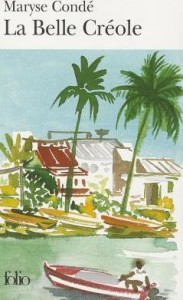
The Belle Créole by Maryse Condé, translated from the French by Nicole Simek, University of Virginia Press, 2020
Review by Austyn Wohlers, Executive Assistant
Many novels chart an individual’s quest for some kind of freedom, ending when that freedom is thwarted or achieved, but what distinguishes Maryse Condé’s The Belle Créole is the fact that its protagonist, Dieudonné Sabrina, achieves his freedom on the third page of the novel. Leaving the courtroom where he has just been acquitted of murdering his lover—a wealthy, white békée woman for whom he worked as a gardener—Dieudonné pauses to reflect:
At the same time, a feeling was starting to blossom within him that resembled happiness. He was free. But another thought instantly besieged him. Free? That meant what? Free to do what?
As Condé demonstrates in the following pages, Dieudonné has not achieved freedom in any meaningful respect. He finds himself in a Guadeloupe beset by crises: citizens still grapple with the fallout from Hurricane Hugo, the question of lendépendans from France permeates politics, vicious packs of dogs roam the streets, and the latest of many groups to strike, the sanitation workers, do so in the midst of a ferocious heat wave, plunging the island into a sort of fetid hell. What follows is a narrative as much about Guadeloupe in 1999 as it is about Dieudonné, while he tries to figure out what, exactly, his unexpected freedom affords him. Translated from the French by Nicole Simek, Condé’s prose moves effortlessly through the conversational, the crass, and the beautiful during Dieudonné’s nearly twenty-four hour journey.
Unsure of what to do with himself, Dieudonné visits and remembers the people who are dear to him, but finds that those who haven’t died or left Guadeloupe have changed irreparably from his nostalgic image of them. The places he loved have transformed as well, having undergone socioeconomic changes or been left to the mercy of the elements. Everywhere he goes reminds him of a past already lived, including the titular sailboat The Belle Créole, where Dieudonné spent the carefree days of his childhood. It lies in symbolic disarray: “Rats, roaches, spiders, and ants caroused every corner.” It is only while reminiscing about the past—about sailing, about his mother, about his lover—that Dieudonné finds any relief:
At the end of the afternoon, he settled into the aft berth, the very same one he had shared back in the day with David and Benjamin Cohen. And it was as if past and present had come together again. As if Marine wasn’t under the ground. As if he had become a kid again, and, honest to God, a kid no unhappier than any other.
The metaphorical resonance of his trial—a white woman struck down by her black laborer—forecloses for Dieudonné the possibility of forging new connections untarnished by time, or of creating a new idea of himself. Every Guadeloupean with a television or a radio recognizes him, and their preexisting scorn or awe colors their disposition. Through Dieudonné’s encounters with these strangers, and the corresponding portrait of a nation gripped by a media trial, The Belle Créole is as invested in locality as it is in personality, allowing the novel freedom from the traditional claustrophobic trappings of an excessively individual novel. Condé is interested in the ways people frame reality for themselves, and how each of these frames captures some aspect of the truth at the expense of another. Dieudonné’s layer Mathias Serbulon, for example, frames his client’s crime in a way that reveals more about himself than it does Dieudonné, a fact he realizes too late:
At first, Matthias had been proud of his line of argument, which he deemed Césairean, or even Fanonian . . . Now, this melodrama that had won the credulous jury over so well seemed to him to lack imagination. His actors had done no more than play out the old stock roles, donning costumes that tradition had worn thin. He had make a mistake: a modern drama, an entirely modern drama lay behind this screen with its hackneyed motifs.
Condé’s novel is about people, in longing for any time but the present, be it a nostalgia for the innocent and known past, or a longing for an unknowable, seemingly impossible future. Almost every character in the book expresses such desires: a teenage girl dreams of a future with her brother in New York, an American academic persists aimlessly in Guadeloupe in an effort to free the “narrow, confining” life of her childhood, and socialist politicians remember “the good old days” of “the past and its traditions.” Though Dieudonné rarely expresses these desires verbally, we get much of this emotion from him via his nostalgic and symbolically weighty musings on the ocean, which both foreshadow his monumental decision at the end of the night and constitute some of the most stylistically gorgeous passages in the novel:
A marina is the rudeness of dry land transformed into a flowing wave. On this liquid brow, shifting and shimmering, the great sailing boats, monohulls and multihulls, jostle past one another in their impatience to get the hell out to open sea, and the catamaran, which comes from Sri Lanka, ferries dreams on its slim moorings.
In The Belle Créole, characters ache for personal renewal or nationwide revolution, and pine, consciously or unconsciously, for the means by which it might occur.
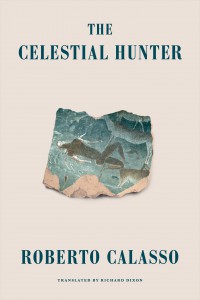
The Celestial Hunter, Roberto Calasso, translated from the Italian by Richard Dixon, Farrar, Straus and Giroux, 2020
Review by Sarah Moore, Assistant Blog Editor
The Celestial Hunter is the eighth part of Roberto Calasso’s monumental series on human civilization that began with The Ruin of Kasch in 1983. A renowned and erudite scholar, Calasso is head of Adelphi Edizione publishing house in Milan, where he has worked since its founding in 1962. His books have always eluded simple definition—history, classics, anthropology, art history, theology, philology, fiction, they’re all there. But secret threads run through the text, forming a delicate structure, and one must have faith in the strength of their connections to ultimately hold it all together. The main themes occupying these volumes interpret ideas on sacrifice, myth, and modernity—but you can expect many diversions along the way.
In defiance of chronology, the ninth part, The Unnamable Present, also translated by Richard Dixon, was actually published last year, ahead of this volume. Whilst The Unnamable Present situates itself very firmly between the Second World War and the modern day, however, The Celestial Hunter opens in prehistory, at the moment of homo sapien’s emergence as a hunter: “Man’s detachment from the animal was the great event among all events in history.” This is the starting point for The Celestial Hunter, when man, previously indistinguishable amongst animal, transformed himself. Of course, lines such as “one day, a day that lasted no less than 25,000 years” demonstrate the breadth of history encompassed in this text, but in that vast period of prehistory, it is important to maintain a sense of how much of it is unknown. One of Calasso’s skills in the interweaving of so many strands is his ability to convey immensity through man’s changing perspective of the past: “In Egypt, time was measured in thousands of years; in Greece, in centuries and decades.” Drawing on numerous anthropologists and philologists (Claude Lévi-Strauss, Jean Clotte, Georges Dumézil etc.), he is concerned by the distinctions and mysteries of what is visible and invisible, known and unknown. It was the invention of writing that allowed events to be recorded in stories—what happened before that will always be shrouded in a certain mystery. The site of Göbekli Tepe was only discovered in Turkey in 1995, but upon its unearthing, it radically contradicted all previous assumptions of paleoanthropologists, and its exact purpose is still indefinite. Cave drawings are another clear example; so little can be said precisely, and yet their intelligence and significance have been noted since their discovery. “To be able to hunt, one has to draw,” and the sky too is a canvas. It is the same sky looked upon by every age and every civilization, who saw there “the exploits of a Celestial Hunter that they never grew tired of contemplating.”
As a book about “The Great Hunter,” many of the expected characters feature throughout: Orion, Sirius, Eros, and a wonderful chapter on Artemis and Apollo. The sources and content draw much from Greek and Roman myths, especially from Ovid’s Metamorphoses. In his transformation into hunter, Calasso tells us, man first imitated animal, eventually leading to his own metamorphosis. Before the advent of agriculture, the hunt emerged at a time of interchangeability between animals, men, and gods. The great hunters, who became the protagonists in tales of metamorphosis, were in turn themselves the result of a metamorphosis—it is this metamorphosis that unites gods and animals with men. However, alongside these Greek and Roman sources, Calasso interweaves Vedic culture, as well as early modern Italian philosophers (Giordano Bruno, Giambattista Vico,) and more modern philosophers and writers: Simone Weil, Nietzsche, Henry James, Marcel Proust, and even Beatrix Potter. One of the most delightful features of his writing is that he can begin a chapter discussing the invention of the bow and arrow, pass by the etymology of “paradise,” Alan Turing’s computers, and the Vedic gods’ discovery of sacrifice, before finishing on a passage from Henry James’s Notebooks. And not only does each volume of Calasso’s work take us through these various diversions, but each volume speaks to another, revealing different aspects of the same topics. The Unnamable Present discusses the notion of sacrifice after the “age of anxiety” in the age of Western secularism and Islamic terrorism. The Celestial Hunter sees sacrifice emerge as a necessary consequence of hunting: a ritual to signify what was taking place between man and the invisible, with its clear connection to remembrance, guilt, purity, and catharsis. It is a turning point in the hunt’s movement from an inevitable, essential act to a gratuitous act. Indeed, in order to understand prehistory, Calasso says, we must understand the “lightening” of life that has taken place in the meantime, anticipating his next work that studied the modern day as “the age of the insubstantial.”
Alongside all of his formidable encyclopedic knowledge, Calasso’s final flourish is his poetic, aphoristic interludes:
The world is a broken vase. Sacrifice tries to reassemble it, piece by piece. But certain parts have crumbled. And, even when the vase is mended, many cracks are visible. Some say they make it more beautiful.
It is not surprising that after his previous volumes, he should name one that alludes to constellations and prehistoric drawings. Calasso’s text is an exploration down into these caves and up into these skies; each passage like an individual star, a light flashed into the darkness, illuminating aspects of a greater story, a greater myth. Calasso’s writing is profuse but Dixon’s translation is agile and elegant, vividly capturing the beauty and intricacy of the prose.
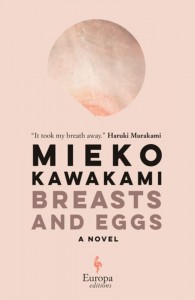
Breasts and Eggs by Mieko Kawakami, translated from the Japanese by Sam Bett and David Boyd, Europa Editions, 2020
Review by Jacqueline Leung, Editor-at-Large
Breasts and Eggs is Japanese writer Mieko Kawakami’s first novel to be translated into English, translated by Sam Bett and David Boyd. It follows the story of three women: thirty-year-old Natsume, a writer, her older sister, Makiko, and Makiko’s daughter, Midoriko. First published in 2008 as a short novella, Breasts and Eggs won the Akutagawa Prize in the same year. This more recent version sees an expansion of the narrative into two parts, as Natsume ponders on her life as an up-and-coming writer, unmarried and alone.
It begins in a white-hot summer, at Tokyo Station where the family is meeting—an uncommon occurrence, for it is Makiko’s third time in the capital. To make the best out of Makiko and Midoriko’s short stay, the family plans meals and activities together, but there is already an inauspicious tension in the attempts at domestic life. In a haunting coincidence, the TV reports the critical injury of a college girl, stabbed repeatedly by a man in her stomach, chest, neck, and face. Midoriko hasn’t spoken to her mother for half a year, and Makiko has gained an obsession for breast implants despite her meagre salary as a club hostess. Forgoing speech, Midoriko turns to her journal as she goes through puberty, and writes: “Once I start getting my period, every month, until it stops, blood is going to come out of my body. It’s terrifying.”
Even in a story where men are more often than not absent, female characters struggle to gain control over their own bodies. The novel’s title represents the two parts of the book in which Makiko and Natsume regard their femininity. In Book One, Natsume is thrown off by Makiko’s obsession over breast augmentation; however, a few years later, in Book Two, Natsume finds herself developing a strong compulsion to bear her own child through artificial insemination, a plan that invites contempt and confusion from others.
Why is it so hard to live as a woman? Kawakami portrays Japanese society as one in which women exist to fulfill their roles as mothers and carers while receiving little in return, whether in remuneration or recognition. As one character puts it, wives are “free labor” with a vagina. Anything beyond the usual is interpreted to be subversive; when one of Natsume’s writer acquaintances shows up to her TV appearance with a buzz cut and her baby—because she, a single mother, has no options for childcare at home—people inevitably ask her if she is making a statement.
Growing from a childhood of poverty and loss, from leaving her abusive father to witnessing her mother and grandmother die of cancer, Natsume isn’t as forthright, so her decision to get pregnant may come as a surprise—or perhaps it is because of her solitary existence that she seeks desperately to “meet” her child, to know them. There are times when the narrative gets oddly specific, and Kawakami goes unflinchingly into the bureaucratic ecology of sperm donation in Japan, which naturally doesn’t favor single women. As Natsume delves into research and speaks with children who are born of artificial insemination and do not know their fathers, she is challenged with the ethics of giving birth. Is reproduction always selfish and brutal, since we can never guarantee the happiness of a child? Are people doomed to repeat the mistakes of their antecedents? Family is the root of all suffering, proclaims another character, a mother who had wanted anything but to start a home. Through Natsume’s female acquaintances who dip in and out of her life, Kawakami offers portraits of families in shambles and unfulfilled marriages. There are bored women relying on their husbands for their livelihoods, daughters beaten up and sexually abused by their fathers—problems of the parents passing on to their children.
And yet, there are tender moments of communion. Crying and breaking chicken eggs over their heads, Makiko and Midoriko reconcile after expressing how much they care about each other. A few years later, the family is reunited again in Osaka when Natsume visits them, as well as her childhood home in the fictional neighborhood of Shobashi, a place Natsume needs to confront as she reminisces about the time when she could still be afraid of her father and her mother beckoned for her—then, she moves forward. Kawakami, who is from Osaka, often mixes Osaka-ben, the regional dialect, into her precise and colloquial prose, introducing the fluidity of the Japanese language as well as its promise of change.
In a recent interview with Kinfolk, Kawakami states: “[W]hen people read my books [in the future], I want them to say, ‘Mieko’s books are no longer necessary for young people.’” It may be that the gender gap in Japan, in any country, will persist (the fact that an expanded tale from 2008 remains relevant seems proof enough), but Breasts and Eggs provides the possibility of transformation through self-acceptance and understanding. Regardless of their various ordeals, characters choose, despite everything, to live, forming relationships and families that are eccentric in structure but just as warm and welcoming.
*****
Read more on the Asymptote blog:

